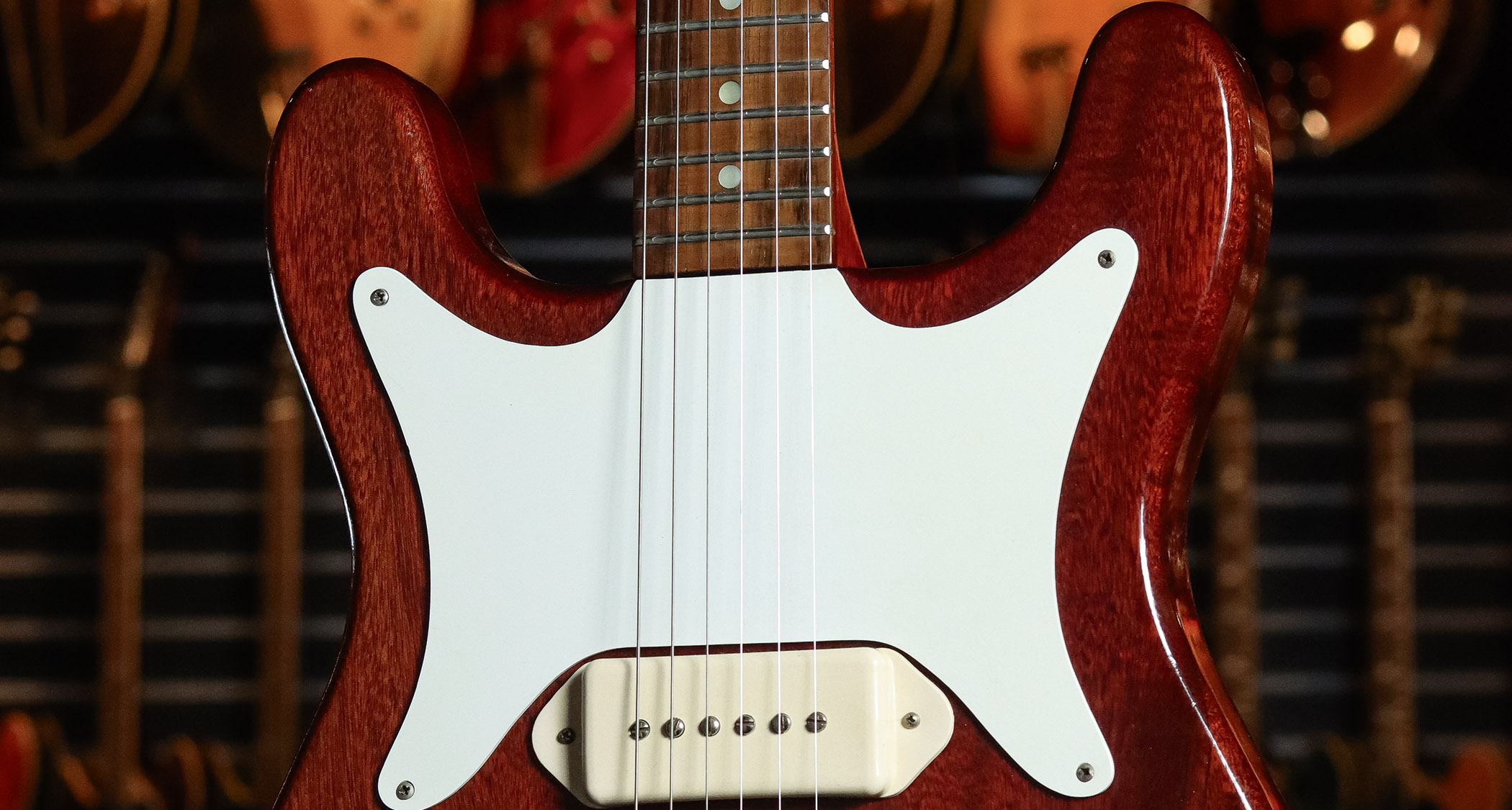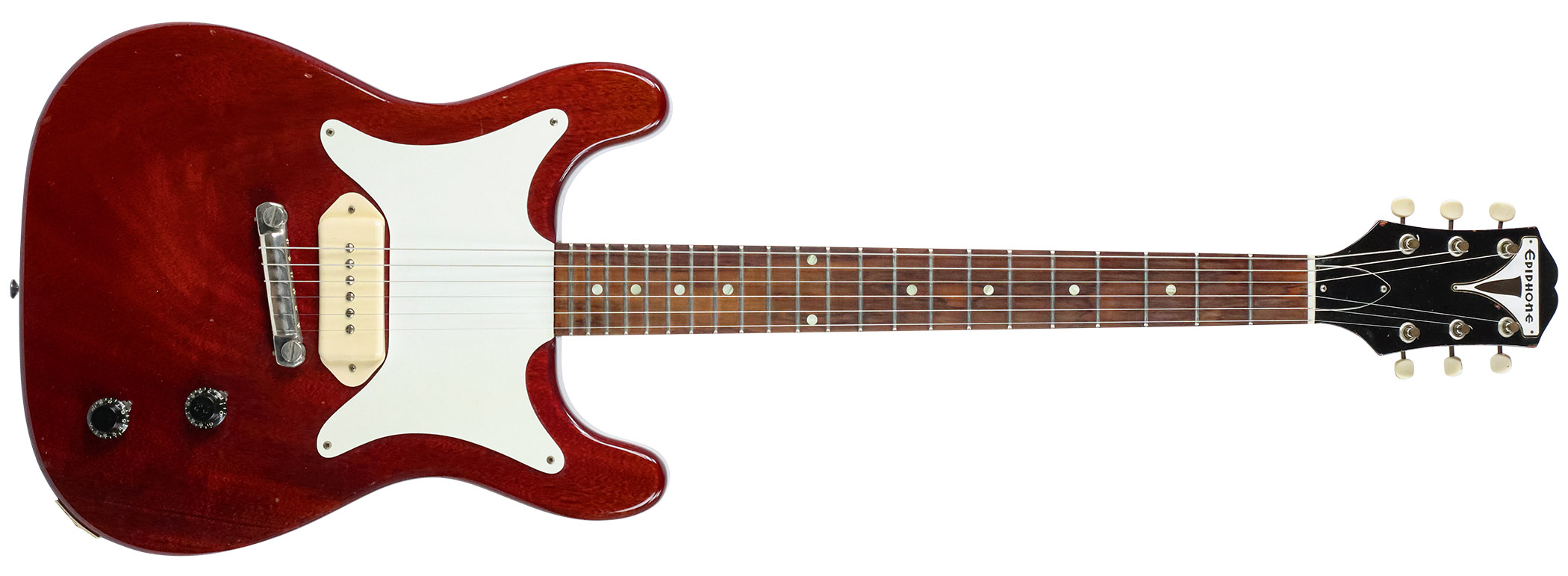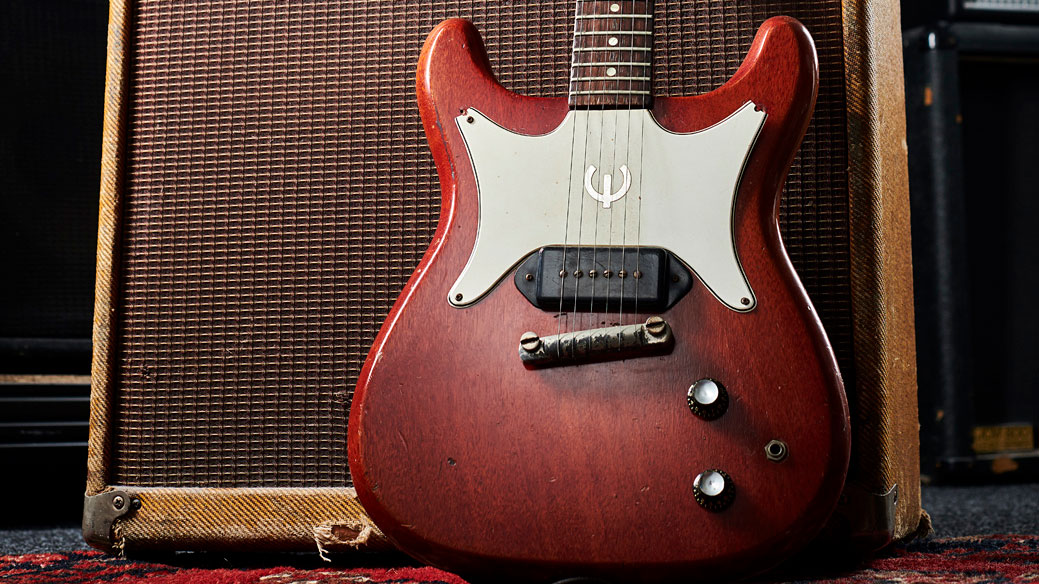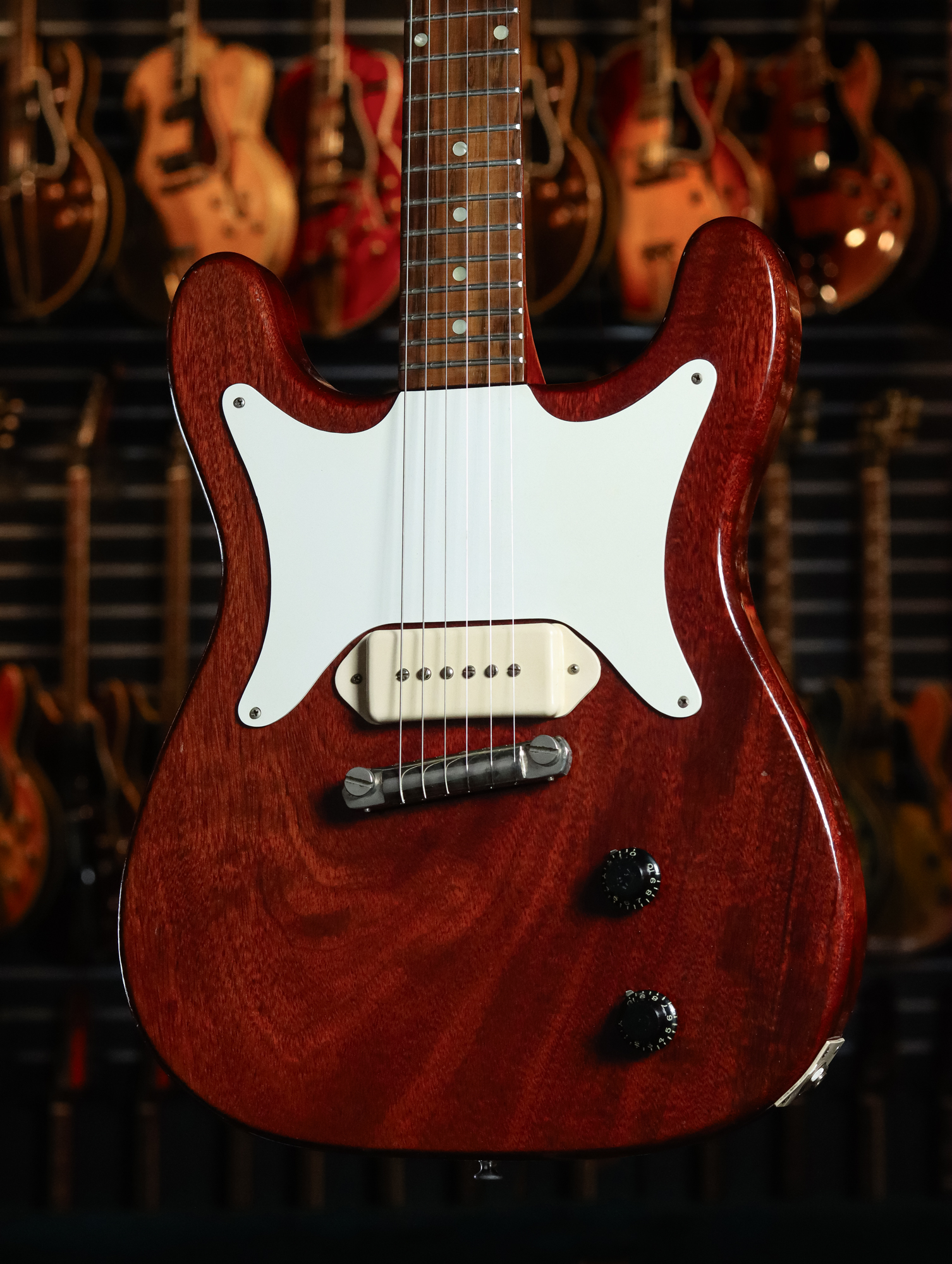“All the coolest things Epiphone ever did packed into one guitar”: Unpacking the gnarly vintage magic of a very rare 1960 Epiphone Coronet
This transitional model has a rare and possibly unique combination of features and definitely has found its place in the hearts of countless players

Not long ago I was at the Philadelphia Guitar Show and a buddy of mine told me he had something I’d probably never seen before – and, sure enough, it turned out he did. I had only ever seen photos of this version of the Epiphone Coronet, but I’d never owned one or even seen one in person.
My friend literally had it for a matter of hours because he acquired it from the original owner, who had brought it into his shop the day before the show. I wouldn’t let him walk away until he’d sold it to me.
The earliest Epiphone Coronets had New York pickups and a thick body, and I’ve seen them in cherry, white and black. By 1960, the Coronet’s body had reduced in thickness from 1 ¾ inches to 1 3/8 inches, the square edges had been rounded over, a P-90 replaced the New Yorker pickup, and the headstock acquired a simpler script logo.
But what we have here is a late-1960 that has a cherry-finished thick body with a cream-coloured covered P-90 pickup and a bikini headstock logo. These features, combined with a no-logo symmetrical pickguard, make this a very rare transitional model.
It weighs a fairly typical 7.5lb and has a regular 8k-plus-change pickup reading that’s a real screamer, but the really cool thing is that the neck profile is like a 1956 Stratocaster. It’s a big and chunky hard ‘V’ that feels very substantial.
It plays incredibly well and produces the greatest sound. I’ve had 1959 Coronets with New Yorker pickups before, but they’ve always had rounder necks that feel more like Les Pauls.
I’ve had hundreds of pre-CBS Strats and more than 100 ’Bursts pass through my hands over the years, but I’ve never had a thick-body Coronet with a P-90
I’ve had hundreds of pre-CBS Strats and more than 100 ’Bursts pass through my hands over the years, but I’ve never had a thick-body Coronet with a P-90.
All the latest guitar news, interviews, lessons, reviews, deals and more, direct to your inbox!
The timeframe when they made Coronets with these transitional specs must have been so short. It has all the coolest things Epiphone ever did packed into one guitar, and the cream P-90 cover is the cat’s meow.

The condition is virtually brand-new, with no nicks, dings or scratches. I was the first person to pull the screws out when I was checking it over and I didn’t even bother to drop the potentiometers because it was so obvious that nothing had ever been touched.
I did lift up the pickup to check the underside of it and it was perfect. The original chipboard case is in good condition, too, although the handle has fallen off as usual. We’re in the process of sourcing an original handle to replace it.
I played it dimed through a little five-watt DeArmond amplifier with an eight-inch speaker and it sounded like Leslie West-plus. I hate to use the expression because it’s such a cliché, but it is one of those guitars that almost plays itself. It’s so buttery with those large factory frets and I actually felt excited about this guitar, which doesn’t happen often any more.

The thin-bodied Coronets feel more like SGs and the thick-bodied ones are more like Les Paul Juniors. It’s a pretty significant difference that has an obvious effect on the weight. If this had been a single-P-90 thin-body Coronet, it would probably have come in at around 6lb or just above. You can hear the pound and a half of extra weight in the power of the bottom-end.
These Epiphones do sell quite well and the thick-bodied New Yorker ones go for around three times the price of a thin-body P-90 version. There are quite a few serious Epiphone collectors here in the US and I could have taken the easy option and called any one of them, but I felt this guitar deserved a special player who understands these instruments well.

So instead I called a friend of mine, who is a bit of a household name, to tell him I was shipping it over and that if he doesn’t like it then he can just ship it back. But I know he won’t be doing that.
The body has a beautiful grain pattern and it’s such a handsome guitar it was very hard for me not to take it home myself. I think that if I was younger and wasn’t feeling the effects of arthritis, I would have added it to my personal collection.
To find such a great guitar makes me feel rejuvenated and I’m very grateful to my friend for showing it to me first.
- Vintage guitar veteran David Davidson owns Well Strung Guitars in Farmingdale, New York / info@wellstrungguitars.com / 001 (516) 221-0563
Vintage guitar veteran David Davidson owns Well Strung Guitars in Farmingdale, New York.
You must confirm your public display name before commenting
Please logout and then login again, you will then be prompted to enter your display name.
![[LEFT] 1966 EMS-1235 with full-scale four-string tenor neck and eight-string mandolin neck. Right: 1961 EMS-1235 with a regular six-string neck and an octave six-string neck.](https://cdn.mos.cms.futurecdn.net/FDaNJGFxekS6EH9te5oeuf.jpg)